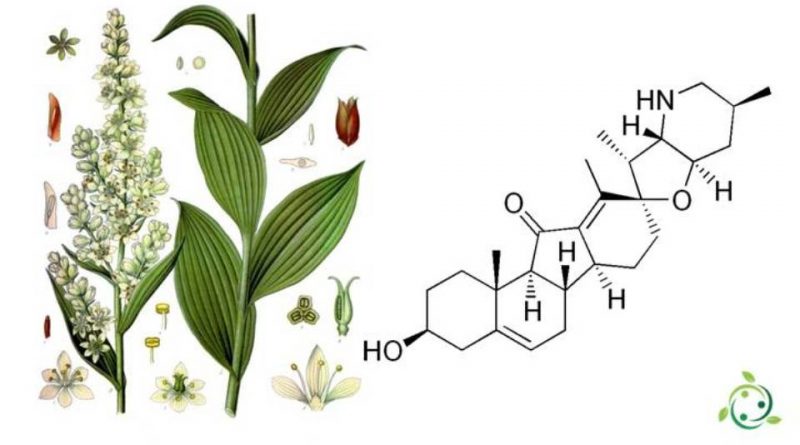Jervine
Jervine
The jervine, whose term in the official IUPAC nomenclature is: (2’R, 3S, 3’R, 3’aS, 6’S, 6aS, 6bS, 7’aR, 11aS, 11bR) -2,3,3’a, 4,4 ‘, 5’, 6,6 ‘, 6a, 6b, 7,7’, 7’a, 8,11a, 11b- hexadecahydro-3-hydroxy-3 ‘, 6’, 10,11b-tetramethyl- spiro [9H-benzo [a] fluorene- 9,2 ‘(3’H) -furo [3,2-b] pyridin] -11 (1H) -one is a steroid alkaloid.
This substance, also known by the name of (3β, 23β) -17,23-Epoxy-3-hydroxyiveratraman-11-one, 11-Ketocyclopamine has a brute or molecular formula: C27H39NO3.
Jervine was first isolated in 1837 by Eduard Simon (1789-1856) from the roots of hellebore (Veratrum album L.) which is a toxic rhizomatous plant belonging to the Liliaceae family.
It was only in 1953 that the molecular structure was established.
The jervine, as well as in the Veratrum album is present in other plants of the genus Veratrum and is a teratogen that can, therefore, determine anomalies and malformations during the embryonic development of vertebrates. Jervina is responsible, in particular, for malformations known as cyclopia and holoprosencephaly.
The biological activity of jervine is expressed through the binding with the smoothened transmembrane protein (SMO) which blocks the normal functioning of the Hedgehog signaling pathway.
Jervine is a toxic compound by ingestion and in addition to the teratogenic effects there are no data in the literature from which any carcinogenic effects are deduced.
Warning: The information shown is not medical advice and may not be accurate. The contents are for illustrative purposes only and do not replace medical advice.

